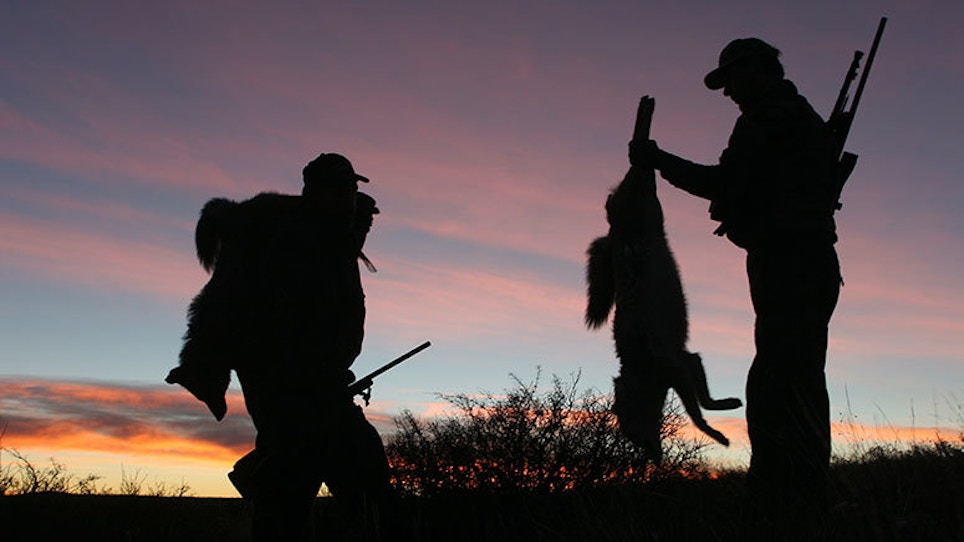Do daytime coyotes give you fits? If so, you might want to schedule a hunt after the sun sets. Try hunting predators in the dark.
Strategy for daytime or nighttime predator hunter is essentially the same. Stick with coyote vocalizations and calls that imitate tasty prey. Any good hand call or electronic caller, like the Johnny Stewart Grim Speaker series, will work day or night. Stay downwind of your calling area and position yourself high to pinpoint incoming predators.
One important difference is a replacement for the sun in the form of a bright-beamed spotlight or night-vision optics. If budget is a concern shop for a spotlight system, visit sporting goods outlets like Cabela’s. Models, such as the Primos Nightblaster Compact, begin at $70, while others range to $150. If you wish to go high-tech then consider thermal or night-vision options such as the Armasight Orion Nightvision riflescope that retails for less than $500. Thermal options are available, such as the FLIR ThermoSight, but be prepared to invest $4,000 or more.
Spotlight beams should be able to pierce a minimum of 100 yards into the distance and some models can blaze a path beyond 300 yards. Most night hunters opt for rechargeable units that mount to the scope, are handheld or are constructed in a headlamp fashion perched on your head.
Riflescopes with large objectives or lighted reticles are recommended for aiming assistance as the light or technology illuminates the target. Before going afield or attaching anything to your firearm, check your state hunting regulations for night hunting legality. It varies from coast to coast, and species to species.
As noted, calling strategy is basically the same, but you need to be attentive as predators can creep up fast and close under the cover of darkness. As you call, sweep the light or vision aid back, and forth across the area you expect predator action. It’s best to sweep with the edge or halo of the light, instead of using the harsher middle section. Once you locate a set of approaching eyes, keep them illuminated with the edge of the beam. Now prepare for the shot, re-aim the main beam of light onto the target and send a bullet downrange.
From experience you’ll soon be able to identify animals by the size of their eyes and the manner in which the approach. Coyotes, fox, bobcats and raccoons all have different gaits and styles of stalking, and its common to have two or more species show up at your nighttime setup. Coyotes are probably the most cautious of the bunch and usually require a riflescope to reach into the darkness. Also consider hunting with a buddy. One hunter can sweep the beam and the other can concentrate on the shot.
Daytime calling has its positives, especially if you like to watch a bounding coyote approach your call. Nevertheless, calling at night can be as exciting as a visit to a haunted house. It can also be very productive on paranoid predators. Veteran caller and call innovator Gerald Stewart enjoys burning the midnight oil for surprise encounters and sums night calling up like this. “Sometimes you’ll get eyes coming from all different direction. It’s like a kaleidoscope of eyes and you’re the target.”






